| Revista Umělec 1999/2 >> Czech Pre-Y2K Exhibition Season | Lista de todas las ediciones | ||||||||||||
|
|||||||||||||
Czech Pre-Y2K Exhibition SeasonRevista Umělec 1999/201.02.1999 Lenka Lindaurová | gallery | en cs |
|||||||||||||
|
"The exhibition season is part of what is called the exhibition operations (this expression has already become domestic despite it being absolutely ugly). In fact it is its output, one of the last parts of the chain that is aimed to be consumed by the public. The viewer does not take notice of what is going on behind the scenes as he/she perceives the galleries’ exhibitions as their shop-windows. The shows bring evidence of their prestige, their strategic exhibition concept and additional activities (gallery collections in case of state institutions, sales of works by stable artists in case of private galleries, etc.), their financial possibilities, contacts abroad and abilities of their team. Unfortunately, this season’s exhibition schedules of large and important galleries in Prague only draw sadness to your face: there is no real big thing coming up, the gallery programs are more of a collection of possibilities than a refined concept which would set the tone of the individual institution’s image. Perhaps everybody is waiting for the year 2000 - the year Prague becomes one of the many European cultural capitals? Is this odd year just a waiting time for a year of great glory? Are all the critics, theorists and gallery goers taking time off? Naturally, this is just a rhetorical question as we’ve already had time off for quite a while.
It is my belief that the exhibition strategy of the largest institutions, such as the National Gallery or the Prague Castle Management, is defined by their position and mission. Still, their performance has in the past few years been measured merely by the number of visitors as opposed to quality of their program. Projects such as the Rudolf II and Magister Theodoricus certainly represent a cherry on a faded cake, they indeed bear significance and are important for the masses (moreover, in both cases they were even professionally carried out) but in order to evaluate the entire exhibition season, it is necessary to see the specter in its entirety. As a viewer, I naturally have the highest expectations and I suppose to be satisfied by both an exhibition of Gothic paintings and a contemporary video installation. Most of this year’s offer, however, is not worth much and one has to retreat to searching for petty pleasures. The National Gallery provides the saddest view of all - a haunted sleeping castle, gradually sucking energy out of the few remaining brave employees. Veletržní palác (NG’s Modern and Contemporary Art Collection) especially feels like a labyrinth with one director a year disappearing in its corridors, leading from budget to autonomy issues. Back to exhibitions, though. It is the National Gallery that is more or less forced to pretend having any schedule, simulating some sorts of pseudo-exhibitions which look quite respectable from distance. Up close, however, you discover their modesty, bareness and often total emptiness. An exhibition in Veletržní palác that reaches the scale of a one-room show at a district museum with works hard-scraped from the furthest corners of depositories (such as Life in the Rhythm of Atom) looks like a dead mouse in the luxurious Versace shop downtown. Besides a few crumbs, Veletržní palác will present two reserved retrospectives that won’t really get your blood boiling (Milan Grygar, Josef Čapek) and a fresh wind in the form of a Martin Kippenberger show. Compared to Vienna’s Secession, however, the average age of the exhibited artists showing in a museum of contemporary art corresponds only with the age of our government members. The other NG collections maintain their neatly conservative program (i.e. Julius Mařák at the Prague Castle’s Riding Hall), combined with completely incomprehensible excesses in the Sternberg Palace (Sozanský and Witkin - hyperbola such as these must have some obscured meaning!). The Prague Castle Management goes on cooking up the same neutral mix for everybody to taste but by no means could this be considered a concept: it’s not an insult to show Libor Fára at the Riding Hall, it will be pleasant to see Alfred Kubin at the Imperial Stable and one may hope that Petr Parléř and Josef Mocker at the Old Palace won’t be too boring. Still, we have to go through a bland marmalade of various children’s worlds or at least world seen through the eyes of children (how absurd) and, fanfare, Easter eggs finally made it from the markets all the way to the Castle. Or isn’t it art after all? And what is the meaning of showing the genius of mediocrity Pavel Baňka among all this? The Prague City Gallery used up its resources last year with importing a number of foreign shows and decided to show Czech modernism this year (Czech avant-garde photography, kinetism). The gallery goes on in a bit too predictable search for young talent (the Stone Bell Biennial) while David the Provocateur Černý’s installation was canceled due to unsurpassable resistance of the Monument Preservation Office. In addition to the interior of the gallery, Černý who has not been exhibiting in Prague for some time, had plans to work with the Old Town Hall’s exterior as well. The Czech Museum of Fine Arts, too, keeps its painless correct concept of grave exhibitions (it is to be expected that the Bourdelle students at the Black Madonna House will reap fruit of media success). The list of upcoming shows reveals only an exhibition of young Finnish art - perhaps nobody at the Museum knows what they will be doing at the end of the year. The Mánes exhibition space reeks with most compromising schedule out of all. The space has already reached the level of Dílo (a Communist network of art shops selling a mixture of under-average works) and shows only those artists who pay up. Besides ever surprising Václav Stratil, we will be seeing also good Czech tapestry, good old Josef Jíra and, of course, some fashion. The only Prague “kunsthalle“, the Rudolfinum, has already shot its biggest ace this year: Nan Goldin, we can already say, has become the hottest show of the year. We may expect some sound and visual art from Vienna, Crossings II, and new works by Martin Mainer. The entire exhibition season in the largest institutions (by intention I did not include small galleries and spaces outside Prague, choosing only the most visible ones) gives the impression of bad strategic allocation of sources. Given their mission and position, the individual institutions should definitely make an effort to come up with a higher profile program, respond to their competition and, above all, hire supercompetent managers as their activities also include fight for sponsorship. Indeed, some of those large institutions have already secured their place in high society as we can tell from their advertising activities. One of the weakest points of exhibition policy include almost 100% absence of contemporary international art. The Prague Castle Management initiated an international program back in 1990 (headed by Ivona Raimanová who has continuously battled with misunderstanding among general public) in the Queen Ann Villa. Oh, long gone are the times when one could see artists such as Turrel, Kossuth, Boltanski... One felt as if we were already entering Europe; it was such a promising start. I wish to stop criticizing now and instead I take this opportunity to remind some bosses of the promises they have made. The interim director of the Veletržní palác Jiří Gregor promised in an interview with the Artist magazine (iss. 5/98) that by the end of last year, the Palace would open a book shop and a café which the visitors would not be ashamed to walk into (this did not happen and as it is, I am often afraid to enter even the Palace’s elevators). During a debate in our editorial offices (iss. 6-7/98), the Culture Minister Pavel Dostál claimed that competition for the National Gallery’s director would be initiated after the state budget is approved, or by the beginning of June the latest. There isn’t much time. The season is in a full swirl. Or is it just a dull season before the big Y2K thing? "
01.02.1999
Artículos recomendados
|
|||||||||||||
|
04.02.2020 10:17
Letošní 50. ročník Art Basel přilákal celkem 93 000 návštěvníků a sběratelů z 80 zemí světa. 290 prémiových galerií představilo umělecká díla od počátku 20. století až po současnost. Hlavní sektor přehlídky, tradičně v prvním patře výstavního prostoru, představil 232 předních galerií z celého světa nabízející umění nejvyšší kvality. Veletrh ukázal vzestupný trend prodeje prostřednictvím galerií jak soukromým sbírkám, tak i institucím. Kromě hlavního veletrhu stály za návštěvu i ty přidružené: Volta, Liste a Photo Basel, k tomu doprovodné programy a výstavy v místních institucích, které kvalitou daleko přesahují hranice města tj. Kunsthalle Basel, Kunstmuseum, Tinguely muzeum nebo Fondation Beyeler.
|








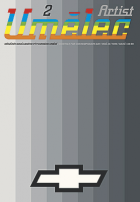















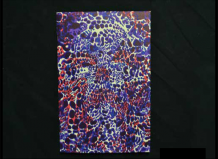





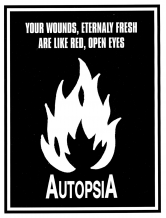
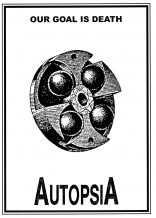
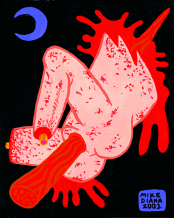


 We Are Rising National Gallery For You! Go to Kyjov by Krásná Lípa no.37.
We Are Rising National Gallery For You! Go to Kyjov by Krásná Lípa no.37.
Comentarios
Actualmente no hay comentariosAgregar nuevo comentario